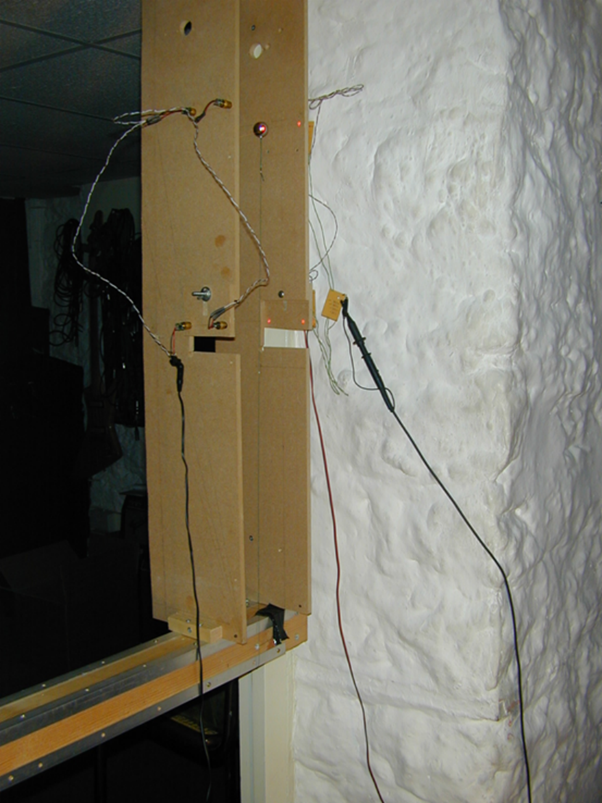In the event of a global catastrophe, with present day technology, there would be no way to get large numbers of us off the planet.
This website introduces new technology that would enable our species to survive by getting us into space with everything we need.
The lifting effect was a chance discovery. The video below, recorded on the 2nd of July 2001, shows the first experiment that exhibited the phenomenon.
In the video I say, “If you just get it right…”, but what “getting it right” involved was a complete mystery at that time. In fact, what you have to do is shorten the distance between the wheel and its precession axis.
Years later, we were able to demonstrate this with the machine shown in fig 2 on the Antigravity page (also shown below for convenience), but we still had absolutely no idea what was happening.
We explain what was happening in the following pages, but that only gets us half way to a practical lifting engine. You can get lift by pulling the wheel closer to its precession axis, but that’s it. You have to get the wheel out to where it started so that you can pull it in again to get more lift, and of course you have to do that without losing what you have gained.
So doing what you just did, but in reverse, is no good. As it turned out, I had already done the experiment that provided the solution. On the Papers page, “An exception to the Law of Conservation of Angular Momentum”, fig 2, shows the actual experiment. For convenience this is shown below.

This is the “wrapping” experiment in which the mass gets closer to the bar without any energy flow. The lifting engine exploits this phenomenon to get the wheel out to where it started without losing any energy.
Another experiment with a much heavier gyro is shown below.

